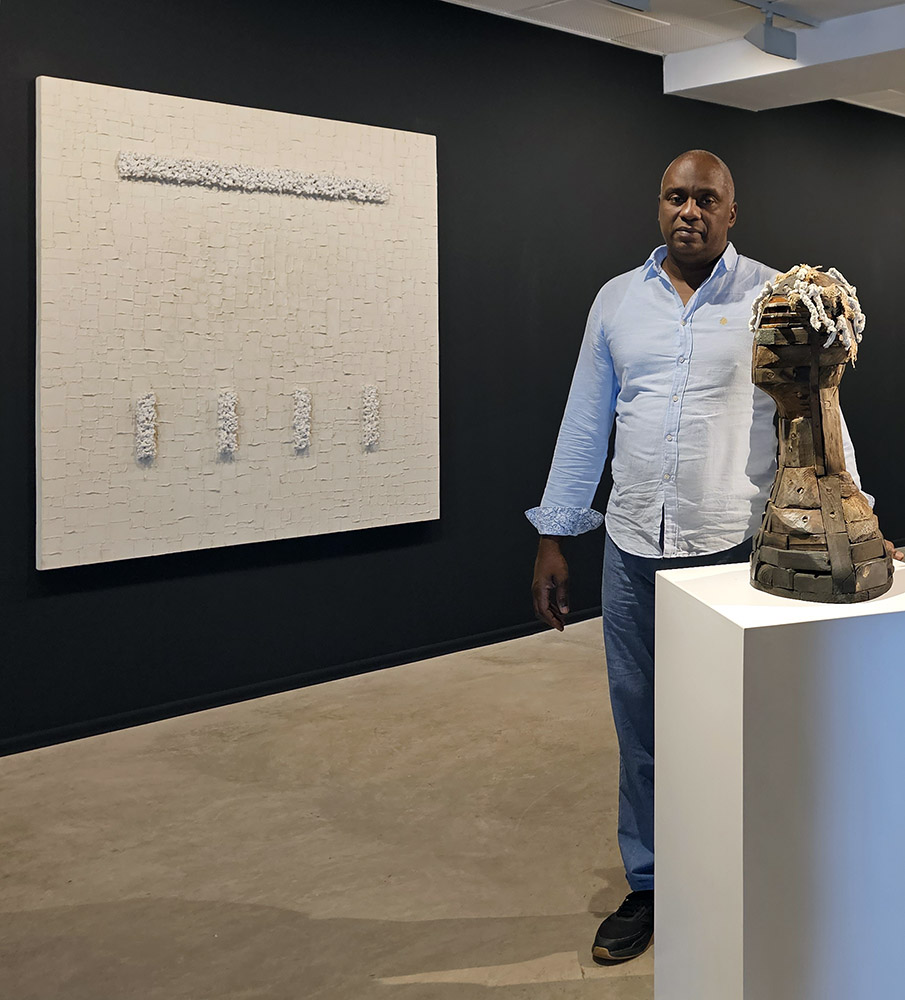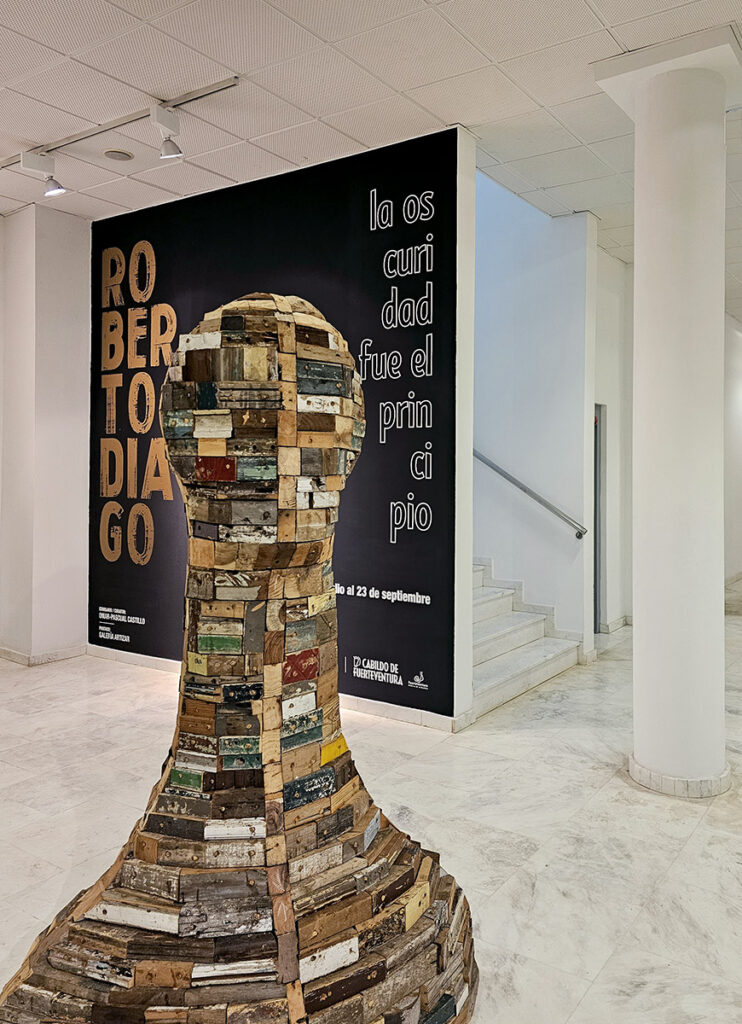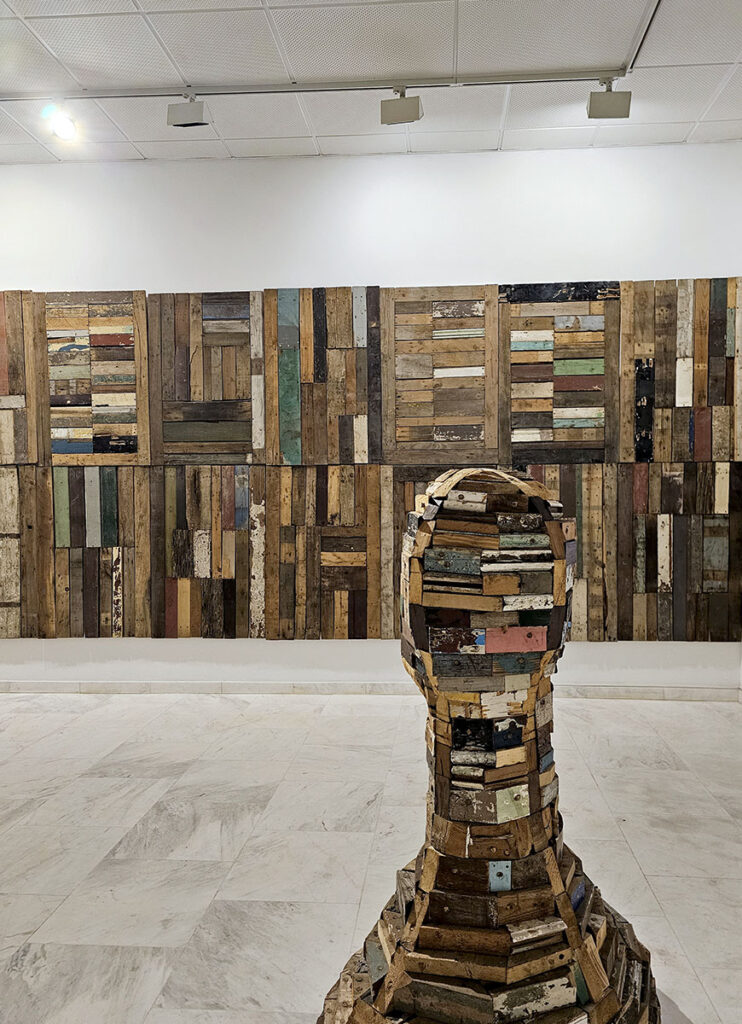ROBERTO DIAGO
La oscuridad fue el principio (Darkness was the beginning)
Juan Ismael Art Center (Fuerteventura, Canary Islands)
July, 6 – September, 23
Juan Ismael Art Center (Fuerteventura, Canary Islands)
July, 6 – September, 23
The work of Cuban artist Roberto Diago has made him one of the most established and outstanding creators of his generation, both in his native Cuba and internationally. Over a career spanning more than three decades, he has progressively constructed an unquestionable corpus, precisely because it is so forceful, embracing his subject matter head on, with undeniable success. And his art always evokes such an embrace. There is something in the constitution of his work, often grandiloquent, that appears to be created more by his arms than his hands, because it also tends to stretch out in space like a spillage, bursting open, a slap around the eyes, rather than a caress, and this violence indicates the strength of the arm, rather than the delicacy of the hand. Even when the hand, detailed and precise as it is, when he, Diago, wants it to.
His work is linked to the anthropocentric tradition of Cuban Art that explores its Afro-Atlantic legacies, initiated by the vertiginous and avant-garde oeuvre of Wifredo Lam, by the mysterious painting of his paternal grandfather, Roberto Diago, and the voluminous fleshy sculptures of Agustín Cárdenas at the start and middle of the twentieth century, and continued after the Cuban revolutionary process by the fabulist and mystical work of Manuel Mendive, the neo-expressionist graphology of Eduardo Choco, and the anthropological research of José Bedia and Marta María Pérez Bravo; entering art through his racial condition as a Black man, city dweller, urbanite, Habanero, descendant of artists and musicians, as an individual permeated by the transitory fin-de-siecle spirit, where diaspora is no longer an escape but instead claims a home, an outline, a familiarity as a point of departure and arrival. Heir to a legacy and bearer of a culture that seeps into every pore, this is the first individual exhibition of Roberto Diago’s work in a Spanish public institution, grounded in the idea of reversing the scriptural logic of the “blank page”, knowing that in the beginning it was always the darkness where light is born, and not vice versa. Without fear of his “blank page” Roberto Diago has been writing his history, visually, re-writing that of his contemporaries, by sharing their work just as that metaphor used before, because he embraces us, just as the universe embraces this planet we call home.
The intention here is to expose this ancestral and contemporary cosmogony that Diago gives us. Curated into three sections, based on his visions of “his people”, “his landscape”, “his home”. As the artist himself insists on looking for “his place in the world”. The exhibition contains around forty pieces including paintings, installations, drawings and sculptures, approached from a museographical perspective, in which each space must feel inhabited by its passers-by. Diago’s and ourselves.
OMAR-PASCUAL CASTILLO
Curator
Roberto Diago is one of the most recognized contemporary artists in Cuba. Born in 1971, he studied at the San Alejandro Academy in 1990 and works as a Consulting Professor at the Instituto Superior de Arte, Havana.
The everyday is the material of his work, he makes use of the materials that everyday life offers him and gives them a symbolic charge in an act of cultural resistance. His work reflects his interest in the legacy of African culture brought by slaves to Cuba, and how it is presented in Cuban society today.
He has had important exhibitions at the Lowe Museum in Miami, The Clement Foundation in Martinique, Harvard University Museum, etc. He works with galleries in the United States, Cuba, Germany and Spain among others and is a regular figure in the best art fairs in the United States and Latin America. He has also shown his work in fairs such as ARCO Madrid or FIAC Paris, as well as in the biennials of Venice, Havana or Dakar. His work is in the permanent collections of the National Museum of Havana, Deste Foundation of Athens, Brownstone Foundation of Paris, CIFO Collection of Florida, Boston Fine Arts Museum or Jorge M. Pérez Museum of Miami, among many others.

Organize:
CENTRO DE ARTE JUAN ISMAEL
(Fuerteventura, Canary Islands, Spain)
Produce:
GALERÍA ARTIZAR


